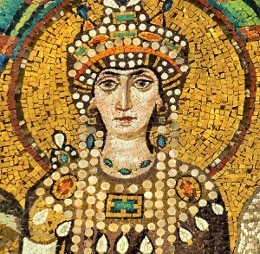ARTH 362 Studies in Early Christian and Byzantine Art and Architecture
- Wednesdays, 11:45 am-2:30 pm
- Instructor: Dr. Anna-Maria Moubayed
This course explores the origins of the development of early Christian and Byzantine art and thought. Focusing on a thematic rather than a chronological approach, the course acknowledges broader ideological systems and the cross-cultural exchanges between different cultures throughout Early Christianity and the Byzantine period. It encourages students to observe and develop their theoretical, artistical, and analytical vocabulary, while recognizing and understanding the interconnections between the early Christian and Byzantine visual culture and its socio-historical and political context, from a multidisciplinary perspective, involving theology, philosophy, Christian doctrine, the built environment, and East-West politics.
The course is mainly concerned with the rich Byzantine visual cultures of non-Latin Christian denominations such as Armenian Orthodox, Antiochian Orthodox, Greek Orthodox, Copts, Ethiopian Orthodox, Syriacs, and Maronites, which developed in Constantinople, Ravenna, Greece and Cyprus, Armenia, Egypt, Ethiopia, Syria, and modern-day Lebanon. The course aims to foster discussions revolving around art, architecture, and ideas, focusing on key philosophers, theologians, and theoreticians, such as Plato, Aristotle, Plotinus, Pseudo-Dionysius, Origen, Augustine, and their influence on Byzantine theology, which, in turn, shaped the visual culture of the Byzantine culture and society. It focuses on theoretical issues concerned with icons, portraits, diagrams, syncretism, the built environment, and cross-cultural conflicts that shaped the complex geo-political and religious context of the Early Christian and Byzantine visual culture.
 Detail of Empress Theodora, ca. 547, mosaic, Basilica of San Vitale, Ravenna (Italy).
Detail of Empress Theodora, ca. 547, mosaic, Basilica of San Vitale, Ravenna (Italy).
